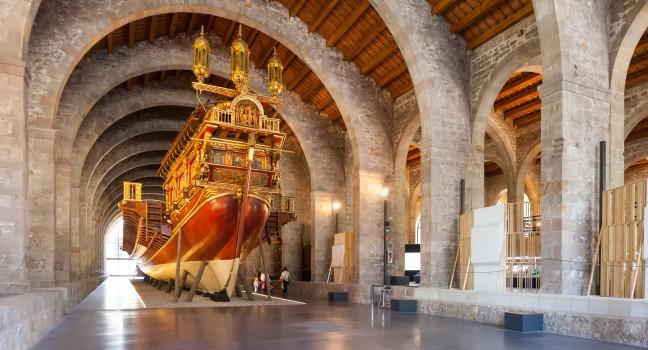Museu d'Història de Barcelona (MUHBA)

This fascinating museum just off Plaça del Rei traces Barcelona's evolution from its first Iberian settlement through its Roman and Visigothic ages and beyond. The Romans took the city during the Punic Wars, and you can tour underground remains of their Colonia Favencia Iulia Augusta Paterna Barcino (Favored Colony of the Father Julius Augustus Barcino) via metal walkways. Some 43,000 square feet of archaeological artifacts, from the walls of houses, to mosaics and fluted columns, workshops (for pressing olive oil and salted fish paste), and street systems, can be found in large part beneath the plaça. See how the Visigoths and their descendants built the early medieval walls on top of these ruins, recycling chunks of Roman stone and concrete, bits of columns, and even headstones. In the ground-floor gallery is a striking collection of marble busts and funerary urns discovered in the course of the excavations. Guided tours are available in English at 10:30 am daily, but have to be reserved in advance. The price of admission to the museum includes entry to the other treasures of the Plaça del Rei, including the Palau Reial Major, the splendid Saló del Tinell, and the chapel of Santa Àgata. Also included are visits to other sites maintained by the museum: the most important and central of these are the Temple of Augustus, the Door of the Sea (the largest of the Roman-era city gates) and Dockside Thermal Baths, the Roman Funeral Way in the Plaça de la Vila de Madrid, and the Call (medieval Barcelona's Jewish quarter).




